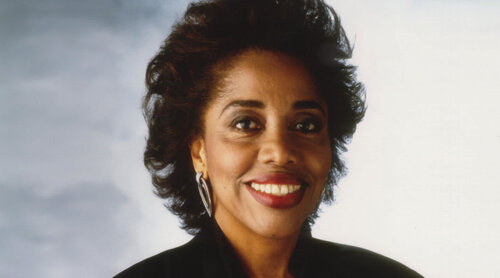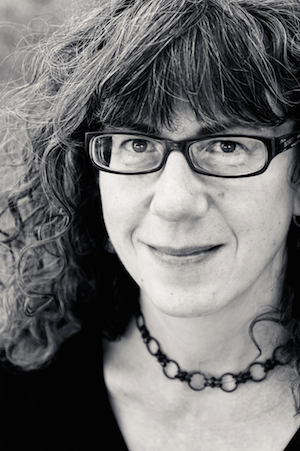ABEL 2021
Listening Session #4
Playlist:
“Brass Ensemble Music by Underrepresented Composers”
Presented by John Manning, Associate Professor, University of Iowa School of Music
Saoko (Brass Quintet) by Tania León (2’43”)
Score on ICON files page
YouTube Video (audio only) of Meridian Arts Ensemble
YouTube video of a Live performance

Tania León (b. Havana, Cuba) is highly regarded as a composer, conductor, educator and advisor
to arts organizations. Recent commissions include works for New York Philharmonic, Los Angeles
Philharmonic, NDR Symphony Orchestra, Grossman Ensemble, International Contemporary Ensemble,
and pianist Ursula Oppens with Cassatt String Quartet. Appearances as guest conductor include
Philharmonic Orchestra of Marseille, Gewandhausorchester, Orquesta Sinfonica de Guanajuato, and
Orquesta Sinfónica de Cuba. Upcoming premieres feature commissions for the NewMusic USA
Amplifying Voices Program, The Musical Fund Society in Philadelphia to celebrate their 200th
anniversary, and for The Crossing chamber choir with Claire Chase, flutist, among others.
A founding member of the Dance Theatre of Harlem, León instituted the Brooklyn Philharmonic
Community Concert Series, co-founded the American Composers Orchestra’s Sonidos de las
Américas Festivals, was New Music Advisor to the New York Philharmonic, and is the founder/Artistic
Director of the nonprofit and festival Composers Now.
Her honors include the New York Governor’s Lifetime Achievement, awards from the American Academy
of Arts and Letters and the American Academy of Arts and Sciences, and the ASCAP Victor Herbert Award,
among others. She also received a proclamation for Composers Now by New York City Mayor, and the
MadWoman Festival Award in Music (Spain).
León has received Honorary Doctorate Degrees from Colgate University, Oberlin and SUNY Purchase
College, and served as U.S. Artistic Ambassador of American Culture in Madrid, Spain. A CUNY
Professor Emerita, she was awarded a 2018 United States Artists Fellowship.
L'homme Armé (Brass Quintet) by Marti Epstein (9’40”)
Score on ICON files page
Soundcloud recording

Marti Epstein (November 25, 1959) started studying composition in 1977 with Professor
Robert Beadell at the University of Nebraska. She has degrees from the University of Colorado
and Boston University, and her principal teachers were Cecil Effinger, Charles Eakin, Joyce
Mekeel, Bunita Marcus, and Bernard Rands. Marti was a fellow in composition at the
Tanglewood Music Center in 1986 and 1988 and worked with Oliver Knussen and Hans Werner
Henze. As a result of her association with Henze, she was invited by the City of Munich to
compose her puppet opera, Hero und Leander, for the 1992 Munich Biennale for New Music
Theater. She was on the jury for the 1994 Biennale.
Marti has received commissions from the Paul Jacobs Memorial Commissioning Fund, the
CORE Ensemble, ALEA III, Sequitur New Music Ensemble, the Fromm Foundation, guitarist
David Tanenbaum, the American Dance Festival, the A*DEvant-garde Festival of Munich,
tubist Samuel Pilafian, flutist Marianne Gedigian, the New England Brass Quintet, the Iowa
Brass Quintet, Boston Conservatory, Boston University Marsh Chapel Choir, pianist Kathleen
Supové, the CrossSound New Music Festival of Juneau Alaska, the Pro Arte Chamber Orchestra
of Boston, the Radius Ensemble, the Ludovico Ensemble, and the Callithumpian consort. The
Longy School of Music commissioned her to compose Quartet for BSO English horn soloist Robert
Sheena to be played at the Inauguration of Karen Zorn, their new president. Marti’s music has been
performed all over the world by ensembles, which include the San Francisco Symphony, the Radio
Symphony Orchestra of Frankfurt, the Atlantic Brass Quintet, and Ensemble Modern.
Invictus by Anthony Barfield (5’50”)
[Score for sale on website]
YouTube Video

Anthony Barfield is a producer and composer based in New York City. Known for his lyrical
writing style, his compositions have been performed throughout the U.S., Europe and Asia.
Anthony has received commissions from groups such as The University of Kentucky Wind
Ensemble and Joseph Alessi of the New York Philharmonic. In 2012 he made his Carnegie Hall
debut at the New York Wind Band Festival where his work "Here We Rest" was premiered. In
demand as a composer in residence, Mr. Barfield has worked with groups such as The United
States Army Band "Pershing's Own” and has had performances at the Southwest, Northwest
and Northeast College Bandmasters National Association. Anthony released his first composition
album in the fall of 2013 titled "Chapter II" with The University of Alabama Wind Ensemble.
Anthony studied composition with C.P. First with additional coaching from Thomas Cabaniss,
Avner Dorman, and Nils Vigeland.
As a former trombonist, he has performed at halls such as Carnegie Hall, Avery Fisher Hall,
Dizzy's Coca Cola Club, Alice Tully Hall, and the Kennedy Center. Anthony has served as a
Trombone teaching Artist for Grammy-award-winning producer Phil Ramone's Children's
Orchestra and was a member of the Black Pearl Chamber Orchestra in Philadelphia. He has
performed with The Malaysian Philharmonic Orchestra, Alabama Symphony, and Mobile
Symphony.
Formerly the Media Production Manager for Juilliard Global Ventures, Anthony produced
content for the Juilliard Open Studios app which was named by Apple as a Best New App
in 2015. After leaving his position at JGV he founded a music production company called
Velocity Music, which has produced pop music for major artists such as the singer- songwriter
Chris Brown, Lil Wayne, as well as scored music for independent feature films. Recently,
Velocity Music signed a record deal with Pologrounds Music a subsidiary of SONY RCA records.
Anthony holds degrees in trombone performance from the Juilliard School and Manhattan
School of Music. Teachers include Joseph Alessi, Per Brevig and Dan Drill. Mr. Barfield
currently resides in New York City with his wife Alaina and Black Pug Gouda.
Fanfare for a Learned Man (Brass Quintet) by Libby Larson
Score on ICON files page
Website recording

Libby Larsen, born December 24, 1950 in Wilmington, Delaware, is one of America’s most
performed living composers. She has created a catalogue of over 500 works spanning virtually
every genre from intimate vocal and chamber music to massive orchestral works and over 15
operas. Grammy award-winning and widely recorded, including over 50 CDs of her work, she is
constantly sought after for commissions and premieres by major artists, ensembles, and orchestras
around the world, and has established a permanent place for her works in the concert repertory.
An advocate for the music and musicians of our time, in 1973 Larsen co-founded the Minnesota
Composers Forum, now the American Composer’s Forum. Grammy Award winner and former holder of
the Papamarkou Chair at John W. Kluge Center of the Library of Congress, Larsen has also held residencies with the Minnesota Orchestra, the Charlotte Symphony, and the Colorado Symphony. As Artistic Director of the John Duffy Institute for New Opera (2014-2020), she guides a faculty of practicing professional artists in nurturing and production of new opera by American Composers. Larsen’s 2017 biography, Libby Larsen: Composing an American Life, Denise Von Glahn, author, is available from the University Illinois Press.
Variations for Brass Band by Thea Musgrave (7’43”)
Online Score
Video

Thea Musgrave (b.1928), composer of over a dozen operas, began her studies in Edinburgh
and in 1950 went to Paris to study with Nadia Boulanger. While still at the Paris Conservatoire her
music began attract attention in her native Scotland. By the mid-sixties she was a much-respected
and widely-commissioned composer in the UK, conducting many of her own works. In 1972, Musgrave
moved with her husband, the violist and conductor Peter Mark, to Virginia, USA where he was invited
to set up the Virginia Opera. From there her career as an opera composer took off, and in 1977 Scottish
Opera premiered her watershed grand opera Mary, Queen of Scots.
During the late sixties- early seventies, Musgrave began working on group of works which sought to
elevate the inherent drama of the concerto form, extending the conventional boundaries of instrumental
performance by directing players in their physical movement around the performance space. While
instruments took on a ‘character’ in doing so, such early works were by no means programmatic, and
soon after, were referred to by the composer as being examples of ‘dramatic-abstract’. In recent years
her musical style has developed into something more lyric and immediate, but certainly no less inventive,
dramatic or unique.
With over 160 mature works to date for choir, orchestra, chamber ensemble and the stage, Musgrave
remains a respected voice in composition, having been commissioned by some of the world’s finest
companies such as the Royal Opera House, The BBC Orchestra and Choirs, and the Boston Symphony
Orchestra.
Transmission I by (Brass Sextet) Florence Anna Maunders (3’15)
YouTube Recording
Score on ICON files page

Florence Anna Maunders started to compose music when she was a teenager, and her early
tape-based pieces from this time reveal an early fascination with the unusual juxtapositions of
sounds and collisions of styles which have been a hallmark of her music-making ever since.
This is perhaps a reflection of the music which interested and excited her from a very young
age – medieval dance music, prog-rock, electronic minimalism, bebop jazz, Eastern folk music,
the music of Stravinsky & Messiaen, and the grand orchestral tradition of the European concert
hall. Flori started out young, as a chorister, clarinetist and saxophone player, but following an
undergraduate degree at the Royal Northern College of Music, where she studied with Anthony
Gilbert, Adam Gorb, Simon Holt & Clark Rundell, she's enjoyed a mixed and international career
as a jazz pianist, orchestral percussionist, vocalist arranger, electronic music producer and teacher.
Since 2018 she's had a bit of a radical transformation of herself and her career, and returned to
composition as a main artistic focus, winning a series of awards & competitions, and with her music
performed across the UK, Europe, the USA and the rest of the world - performances and collaborations
with leading ensembles, orchestras and soloists.


